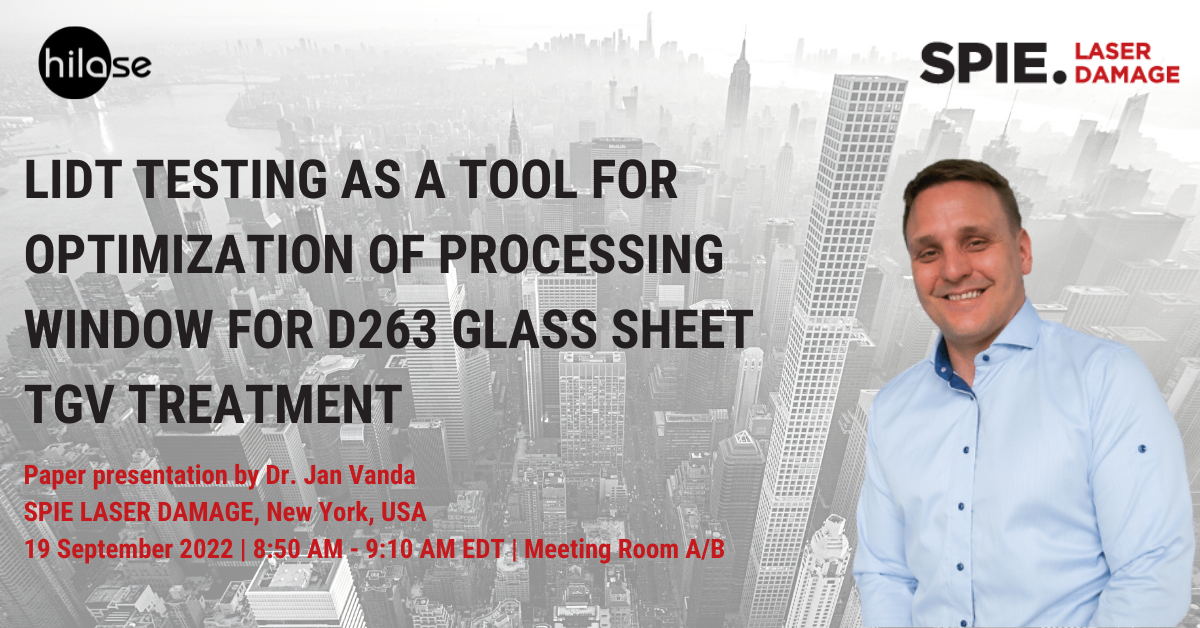On September 19, our colleague Jan Vanda is going to present his paper on LIDT testing as a tool for optimization of processing window for D263 glass sheet TGV treatment at the SPIE LASER DAMAGE conference that is going to take place on 18 – 21 September 2022 in Rochester, New York, United States. The presentation will be available from 8:50 AM to 9:10 AM EDT in the meeting room A/B. More details.

Laser-Induced Deep Etching (LIDE) is considered as the one of the most promising techniques for production of so-called TGVs (Through Glass Vias). In the production process, thin glass sheet is treated with ultra-short lasers pulses to induce surface and volume modification, allowing efficient wet etching and formation of through hole. Precise knowledge of damage threshold of such glass is essential when optimizing the whole process and scaling up the production via laser beam parallelization. In the paper, the authors present recent results on LIDT measurement of D263 glass sheets at wavelengths 1030 nm and 515 nm, effective utilization of such knowledge for setting up multi-Bessel beam processing optics, and we demonstrate resulting substrates with TGVs.
The HiLASE Centre has long been involved in Laser Induced Damage Threshold testing. We have established a Quality Management System in our LIDT laboratory and received the ISO 9001 CERTIFICATE. Learn more about our LIDT services.








